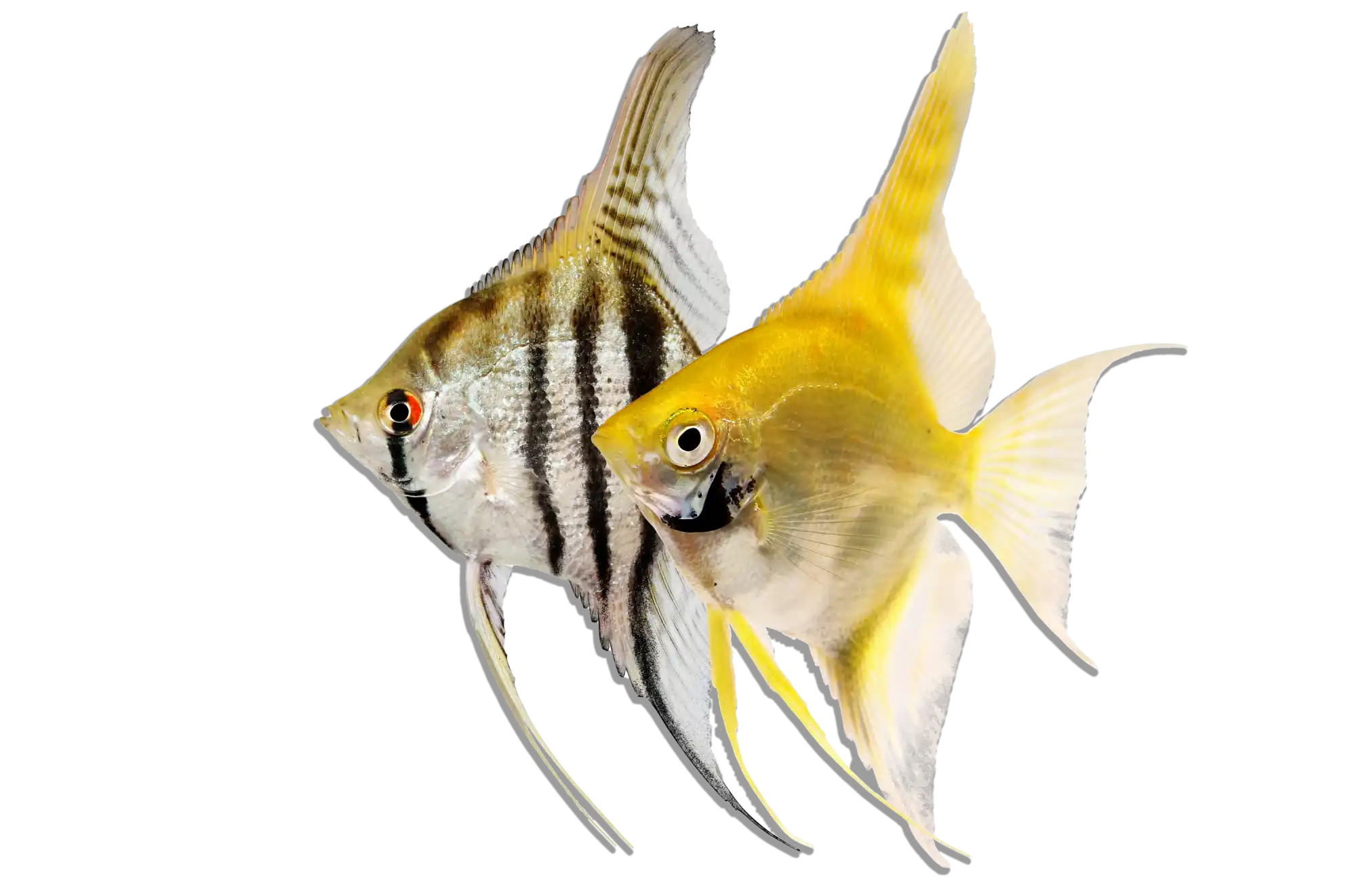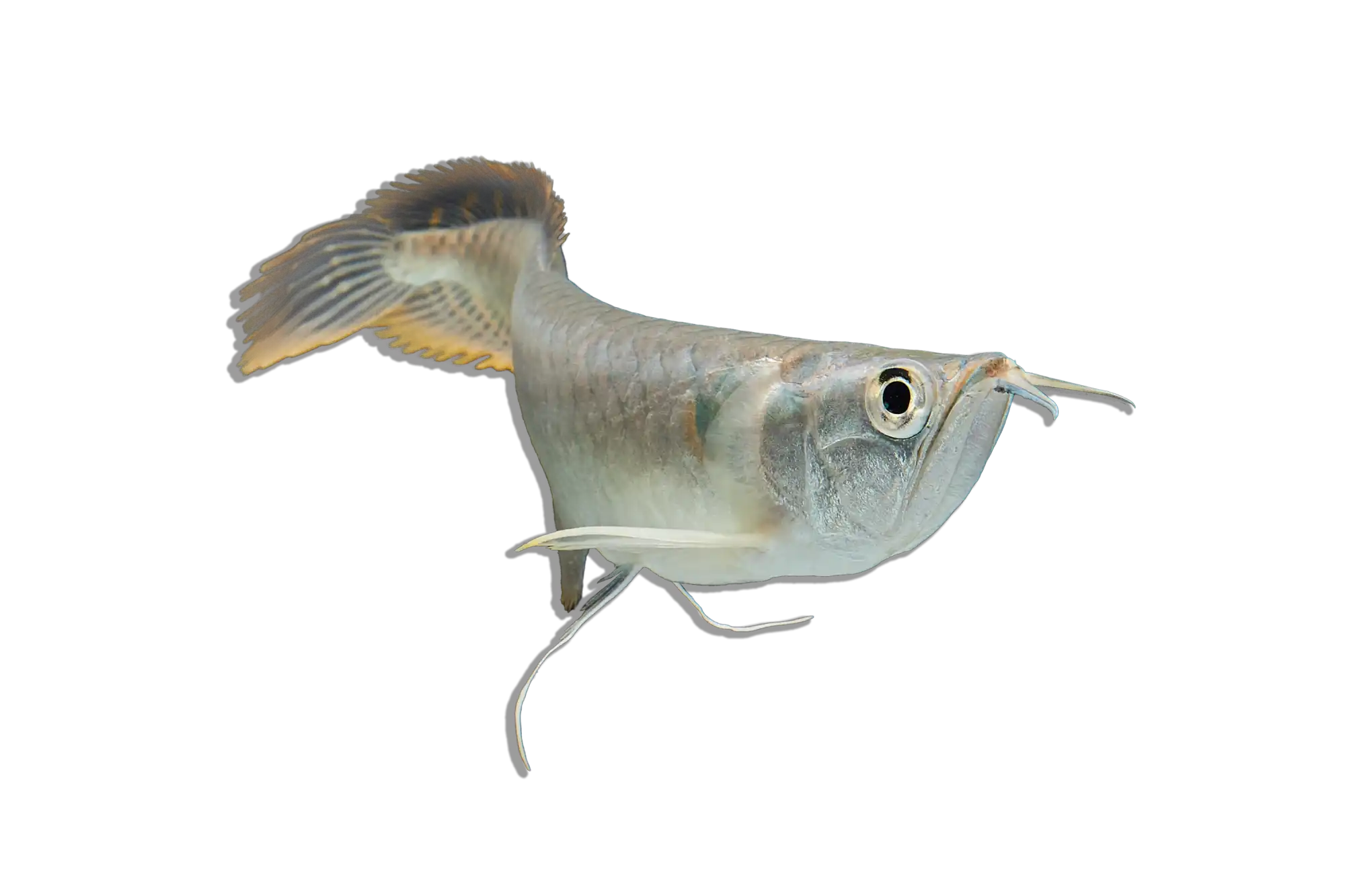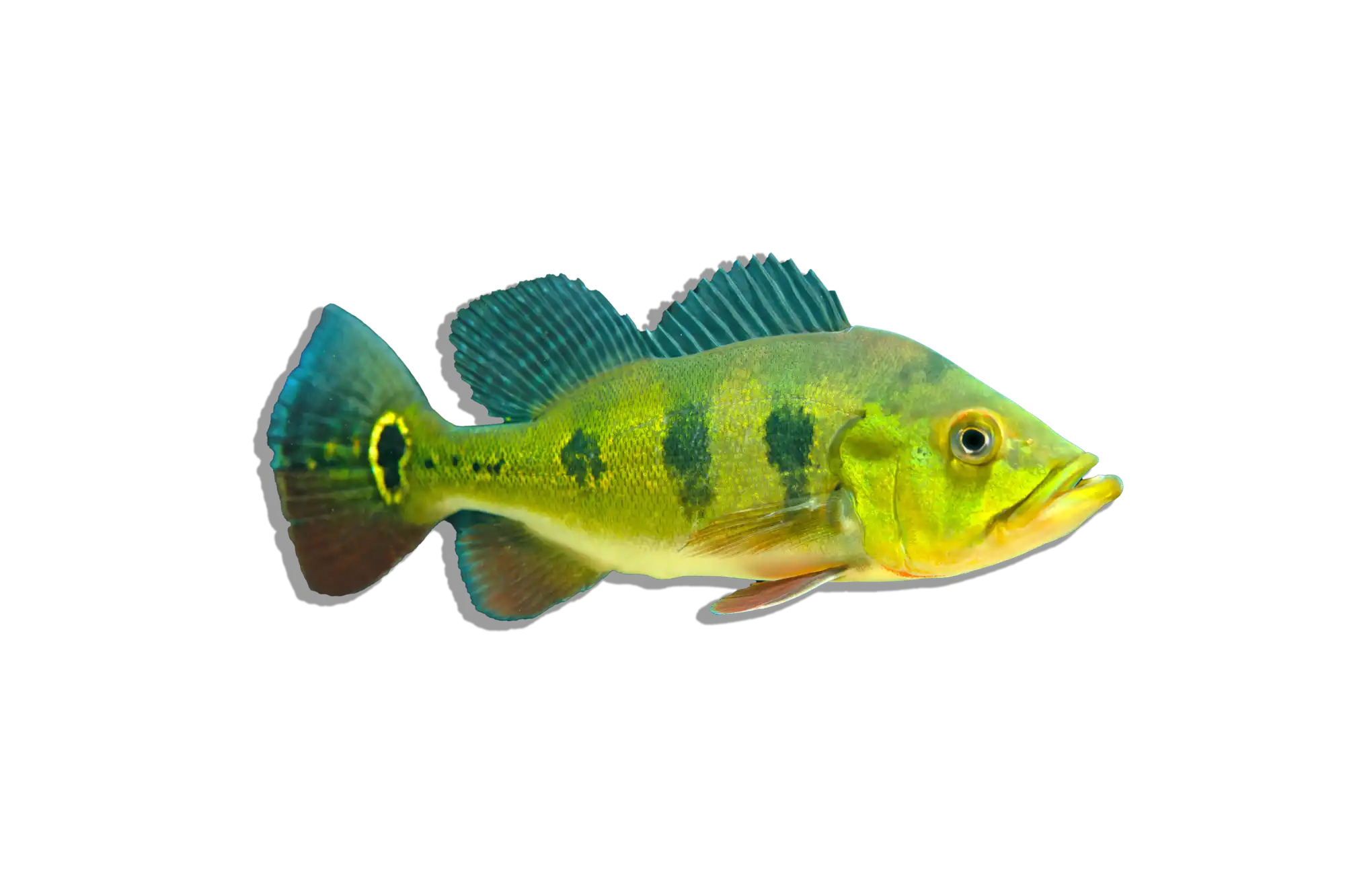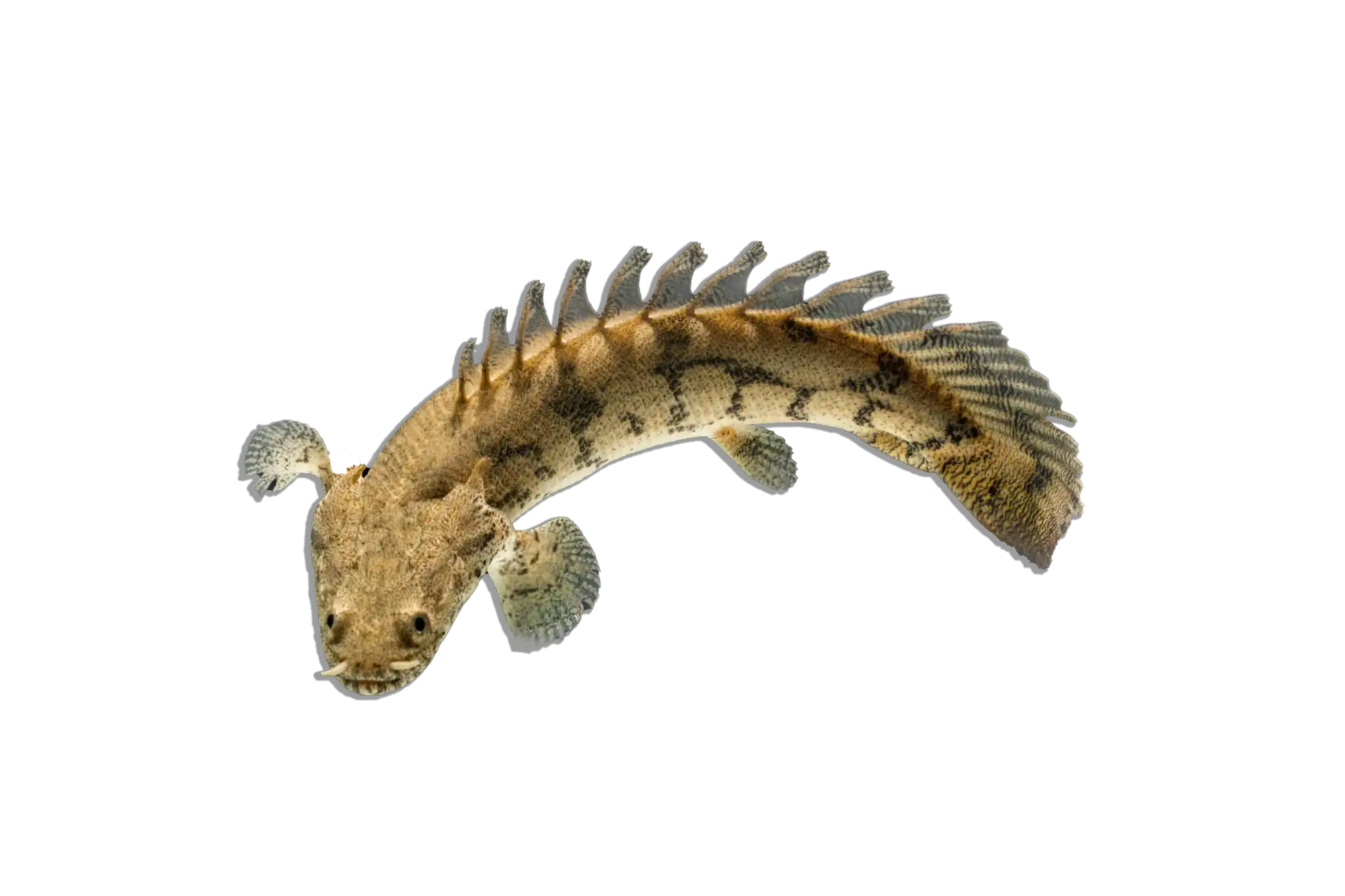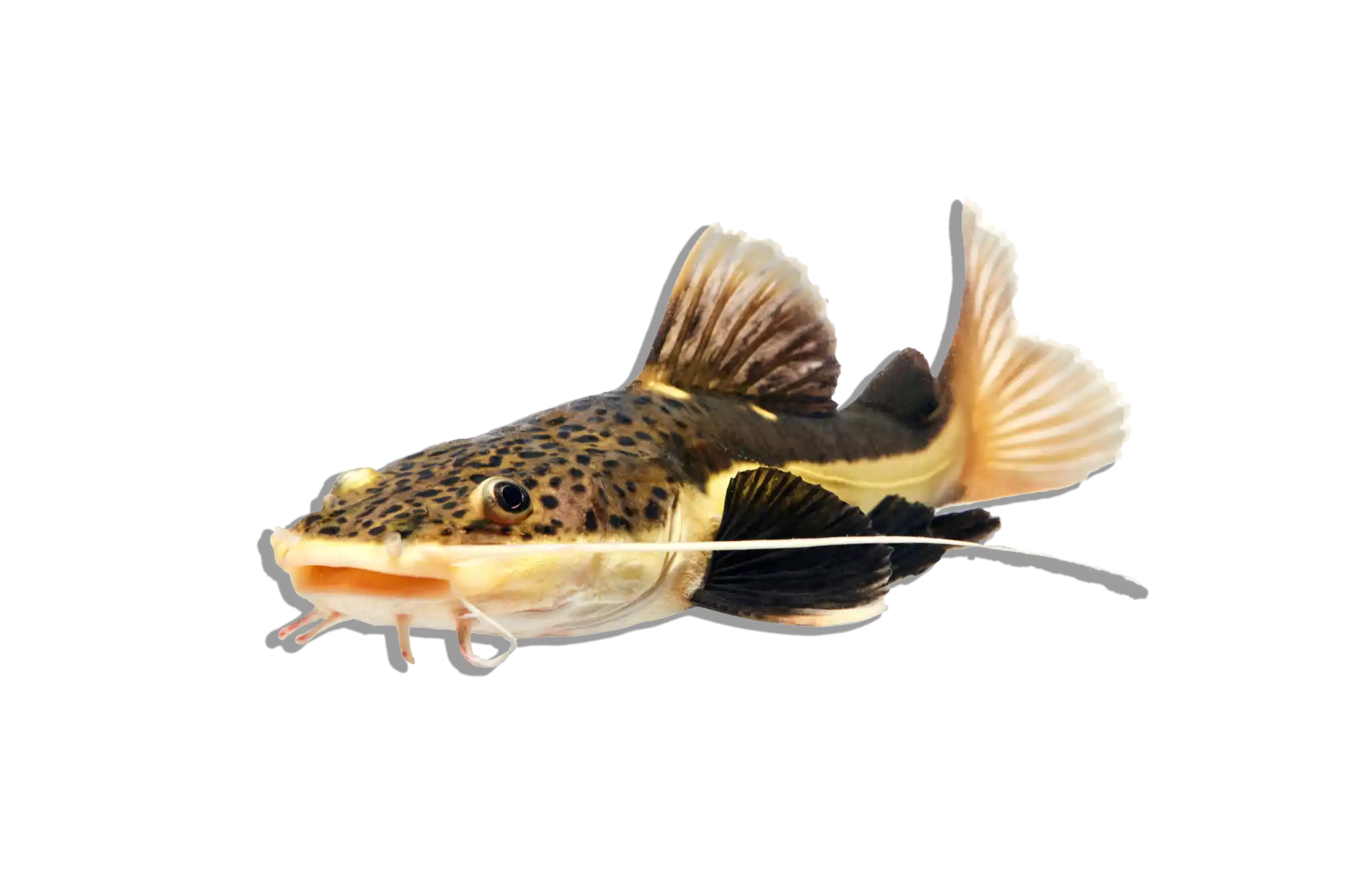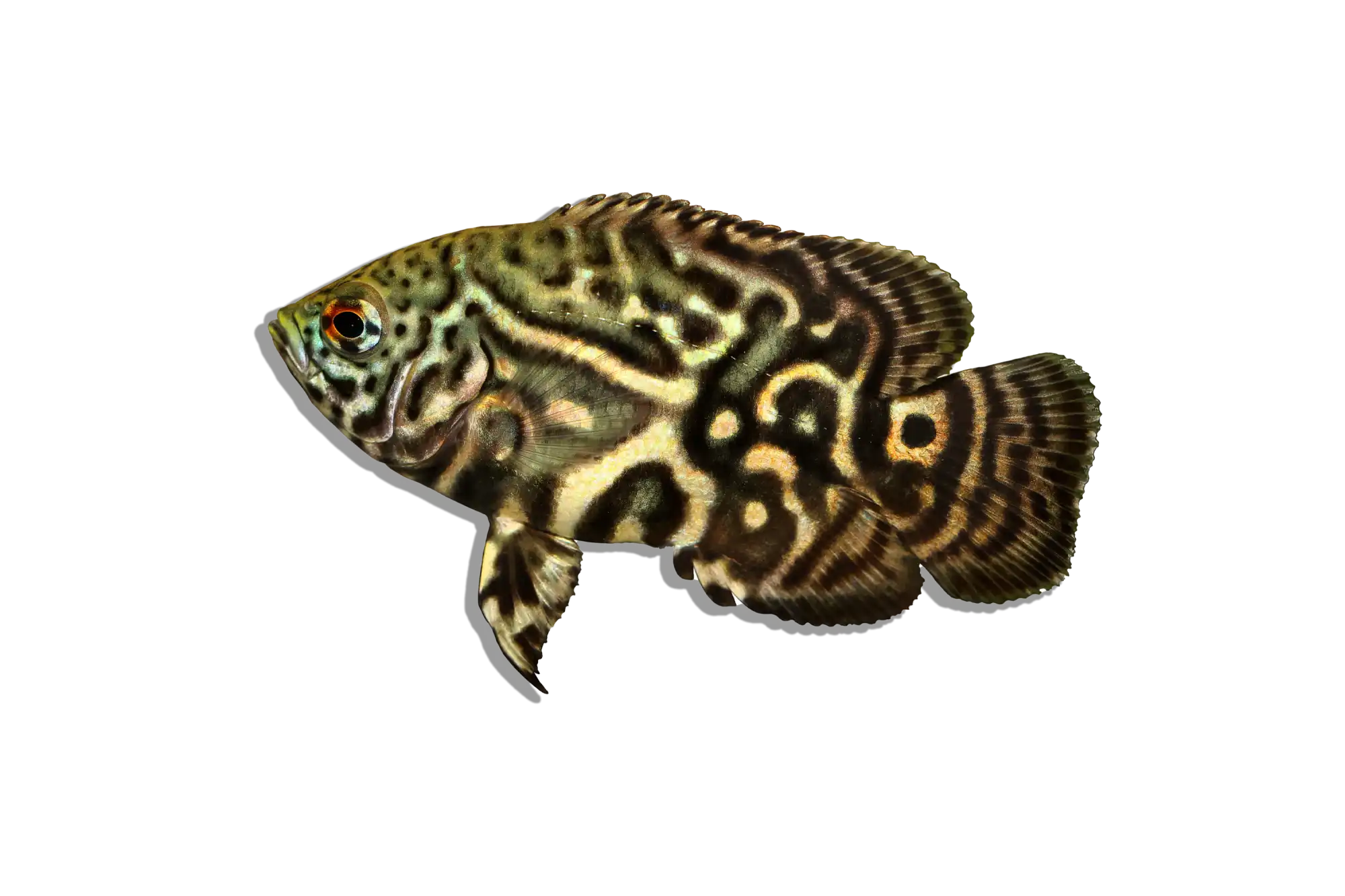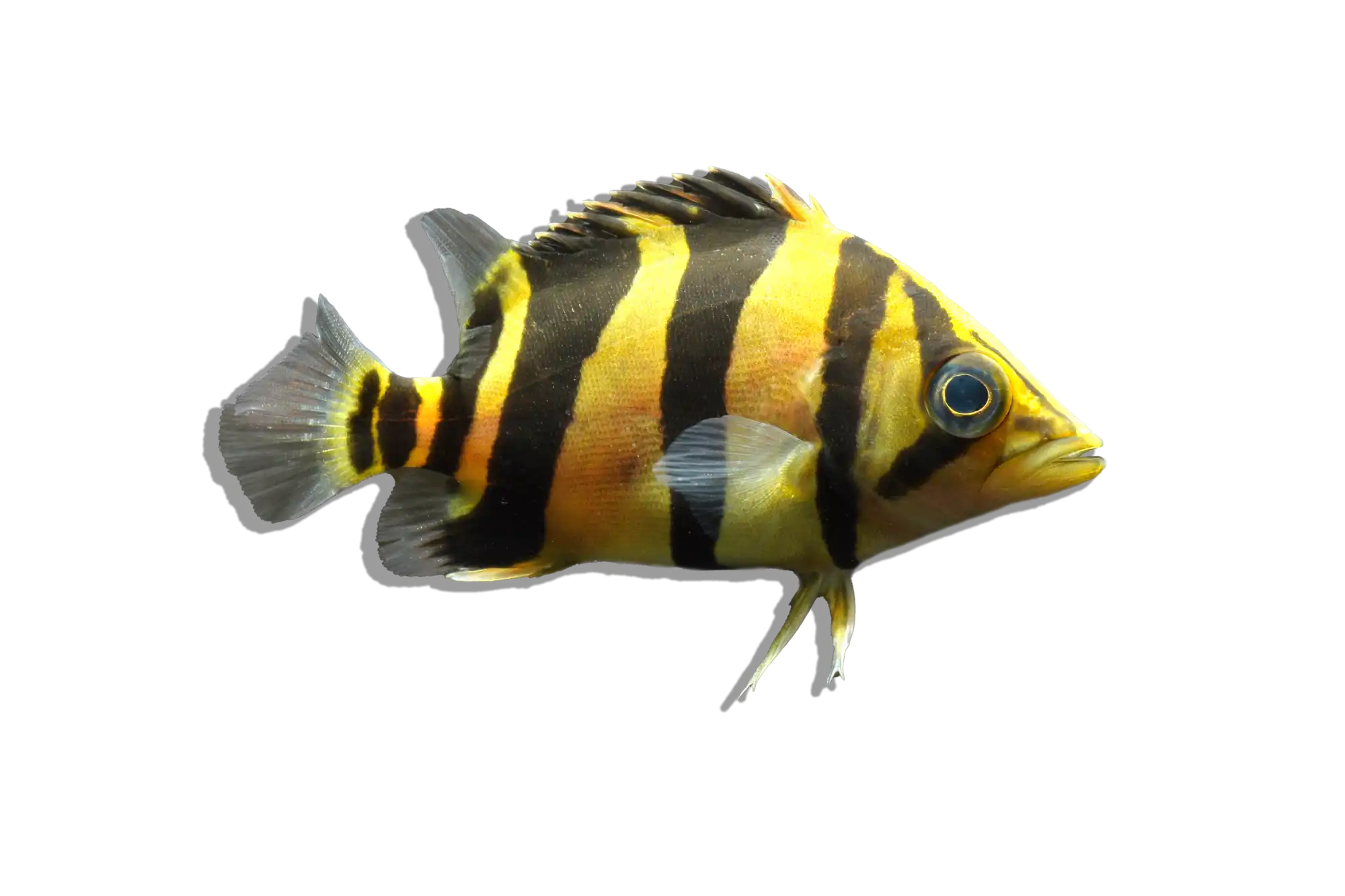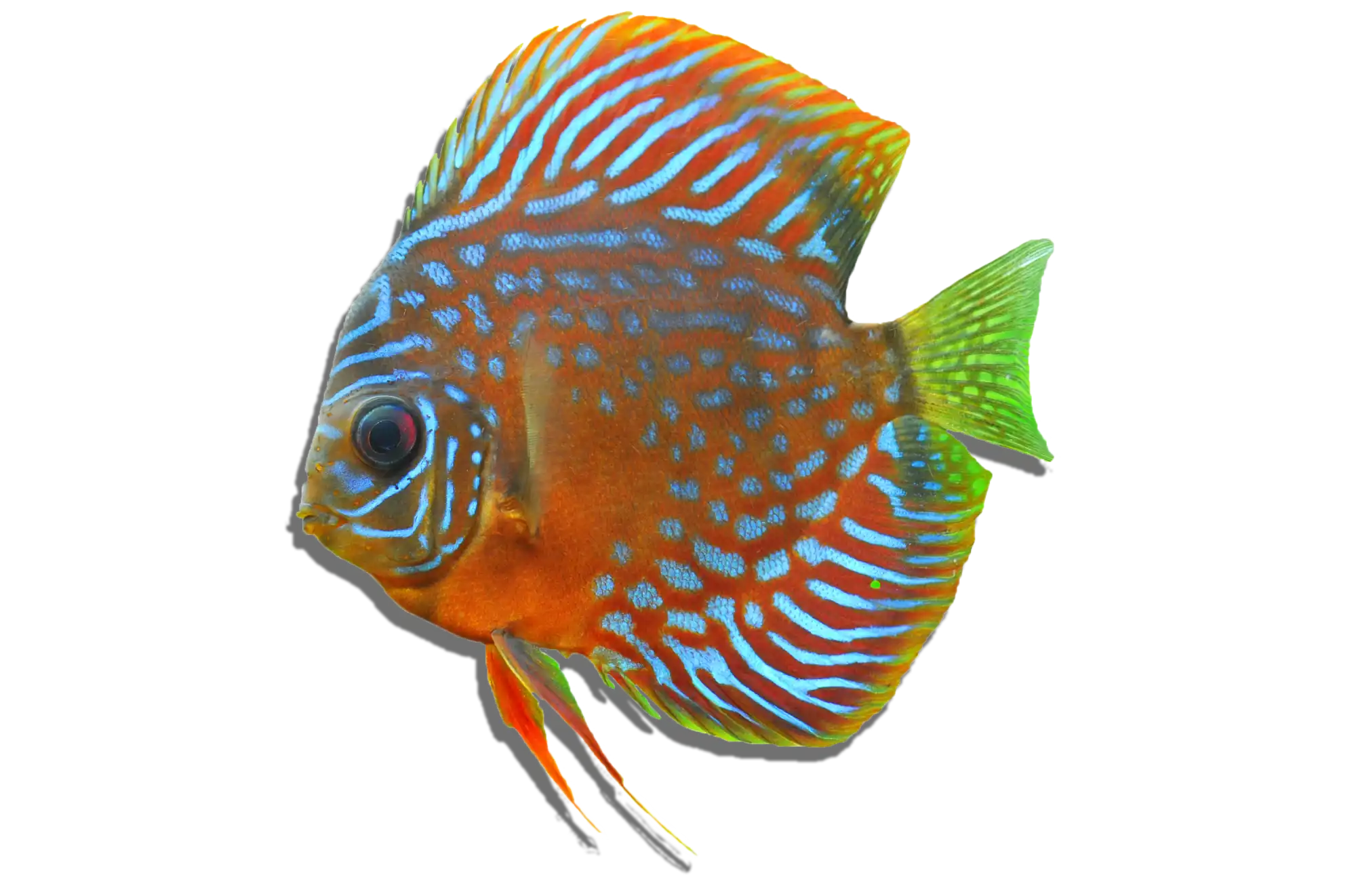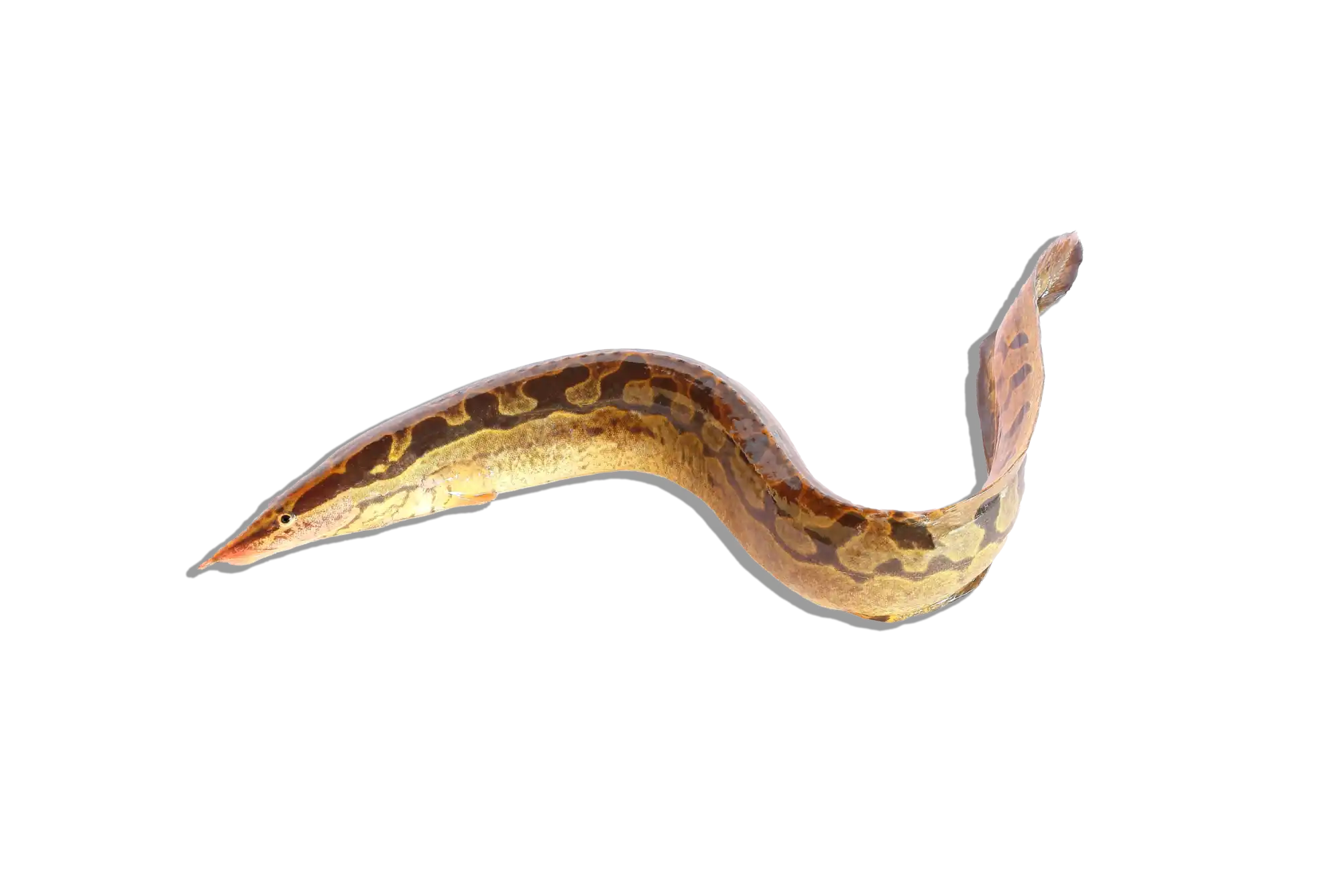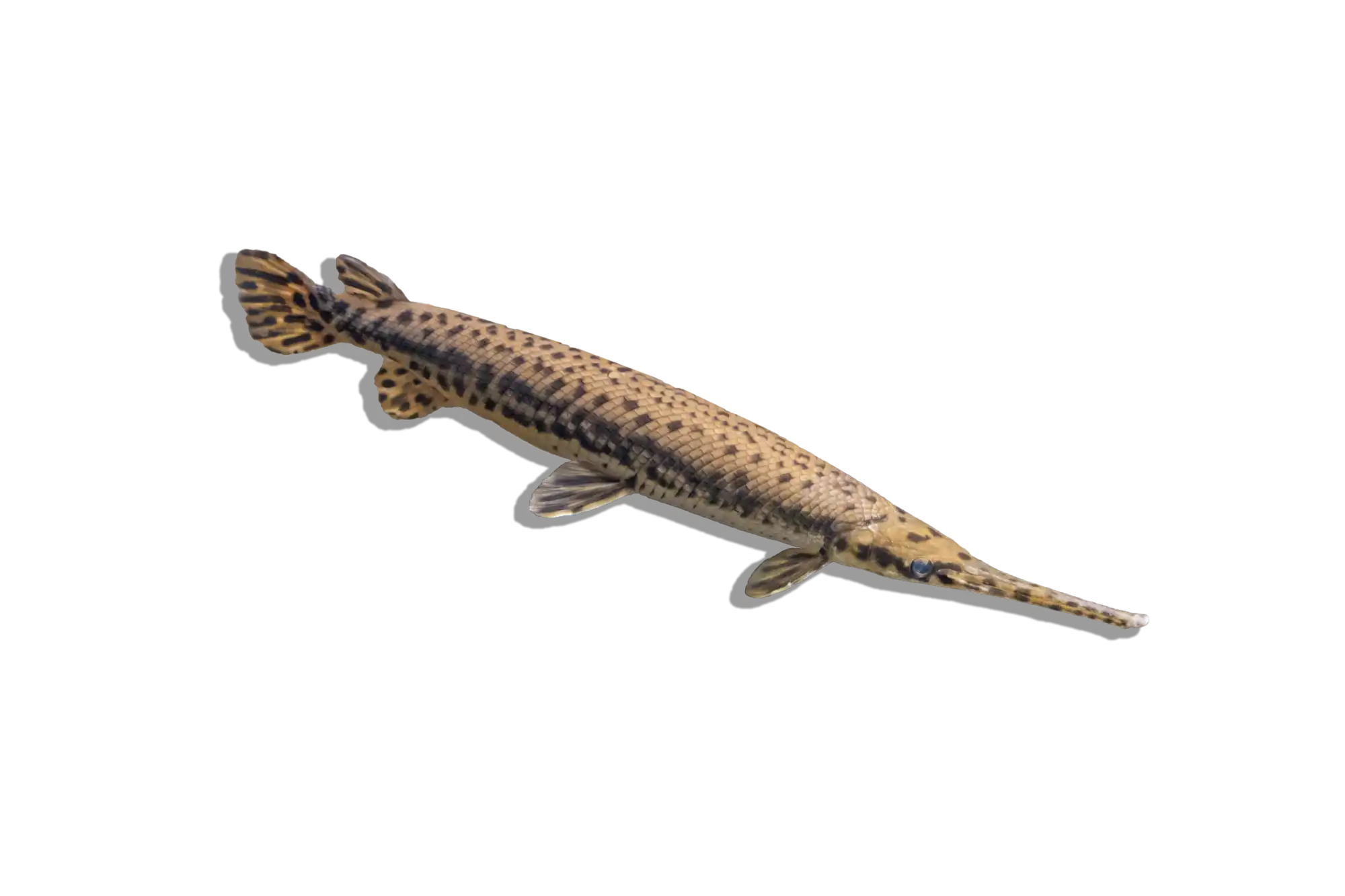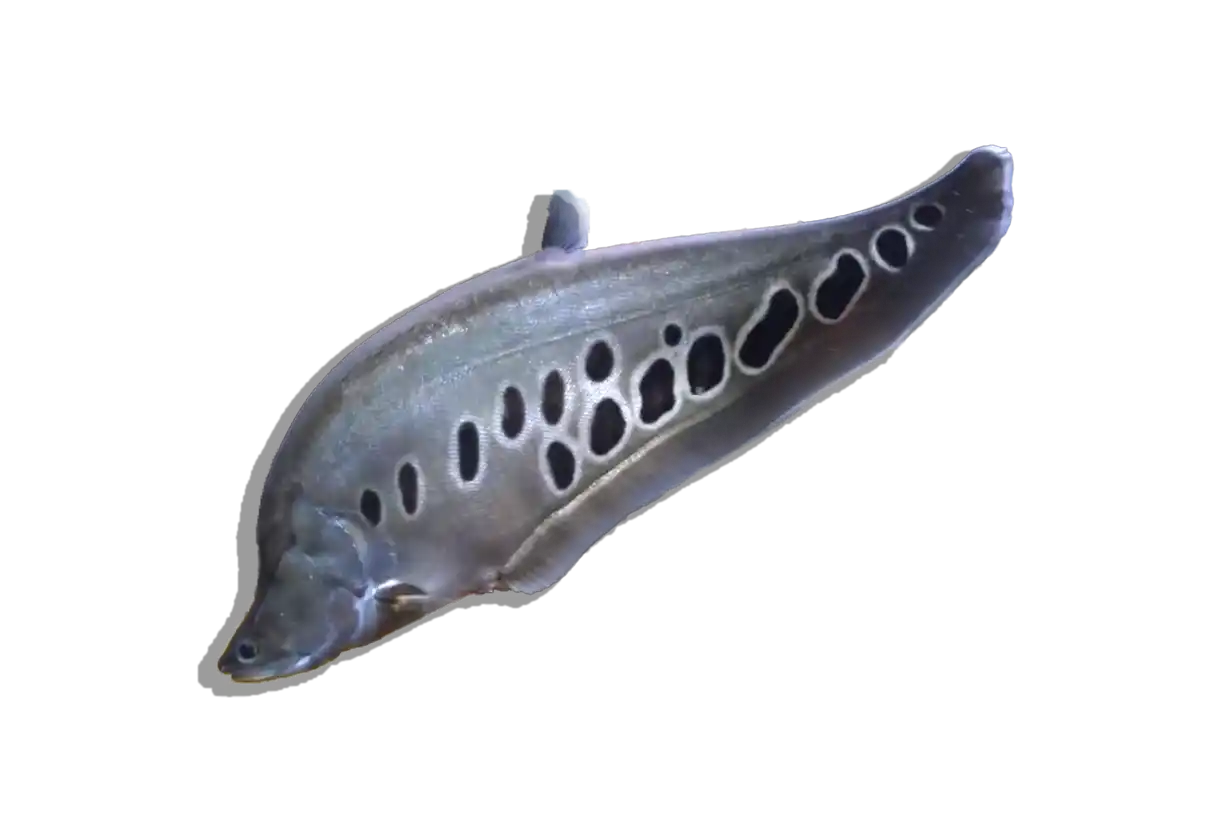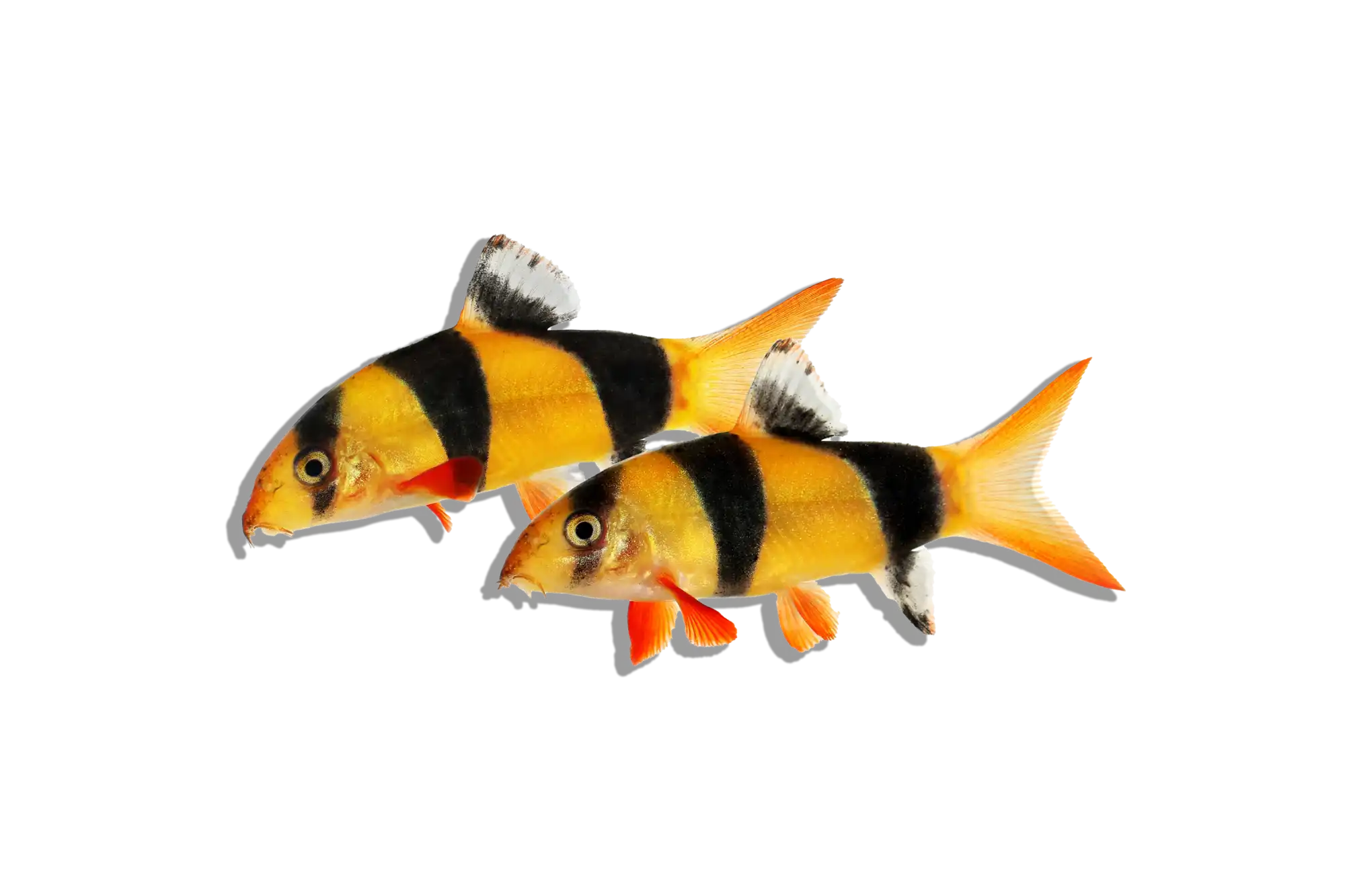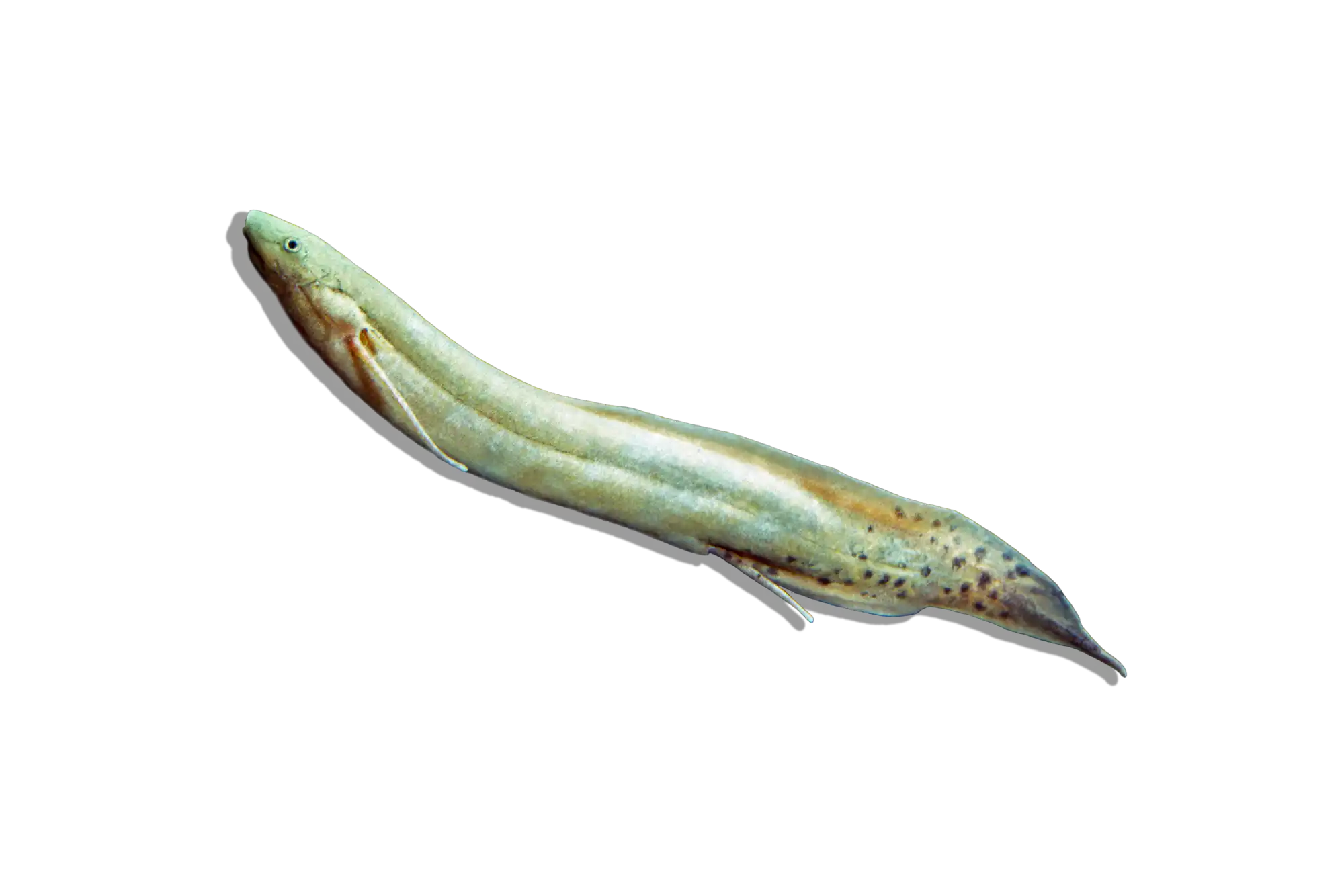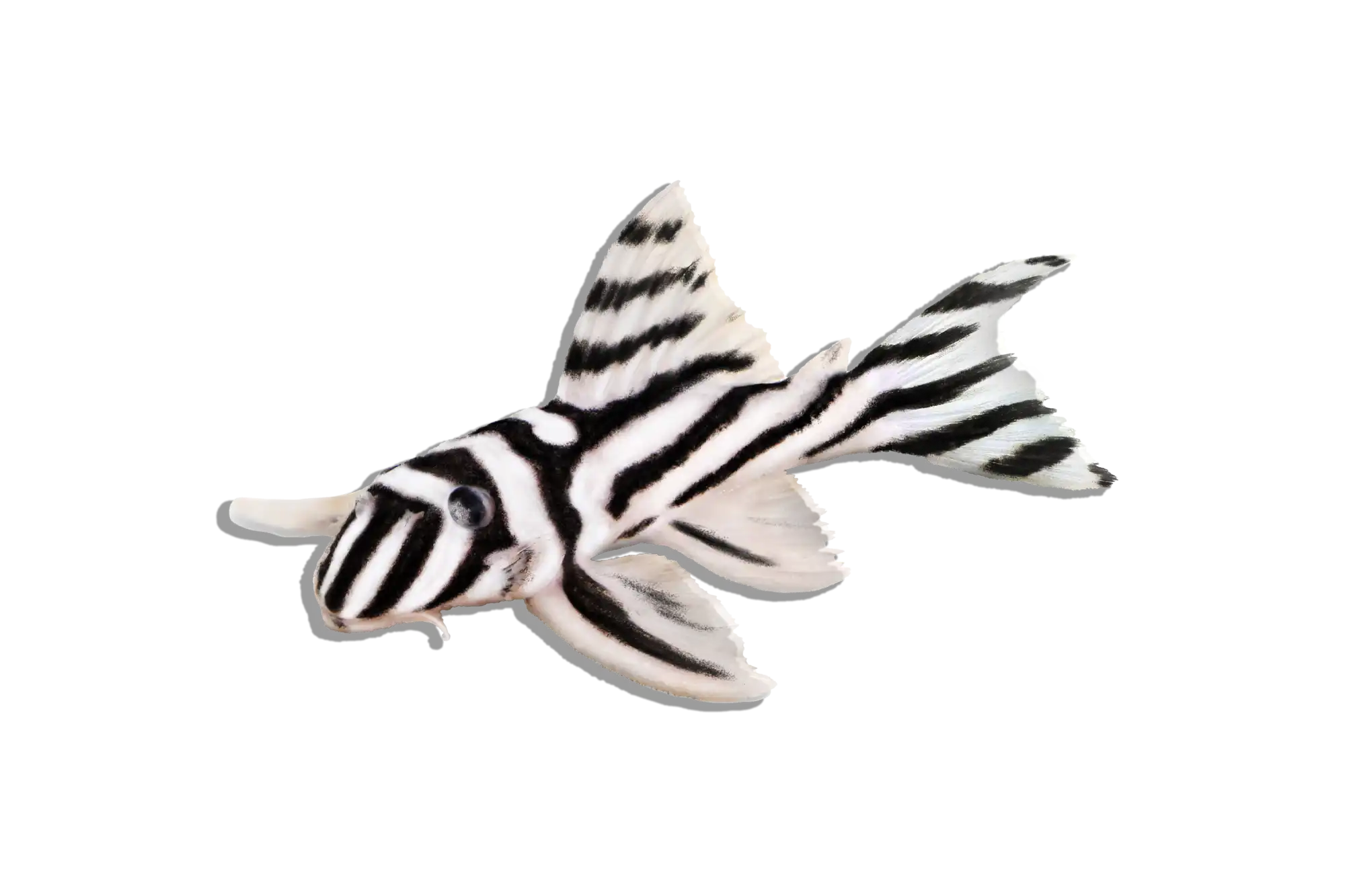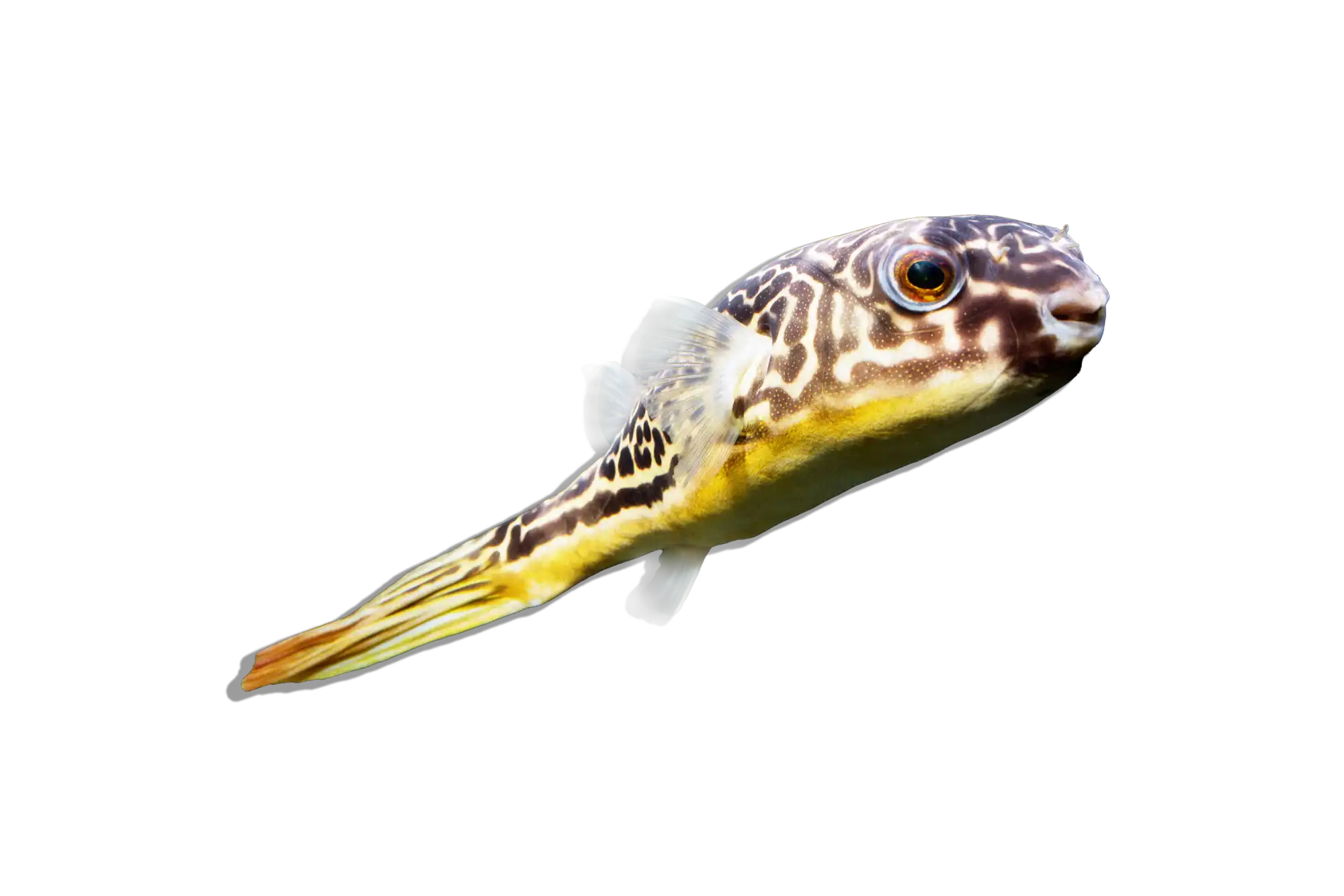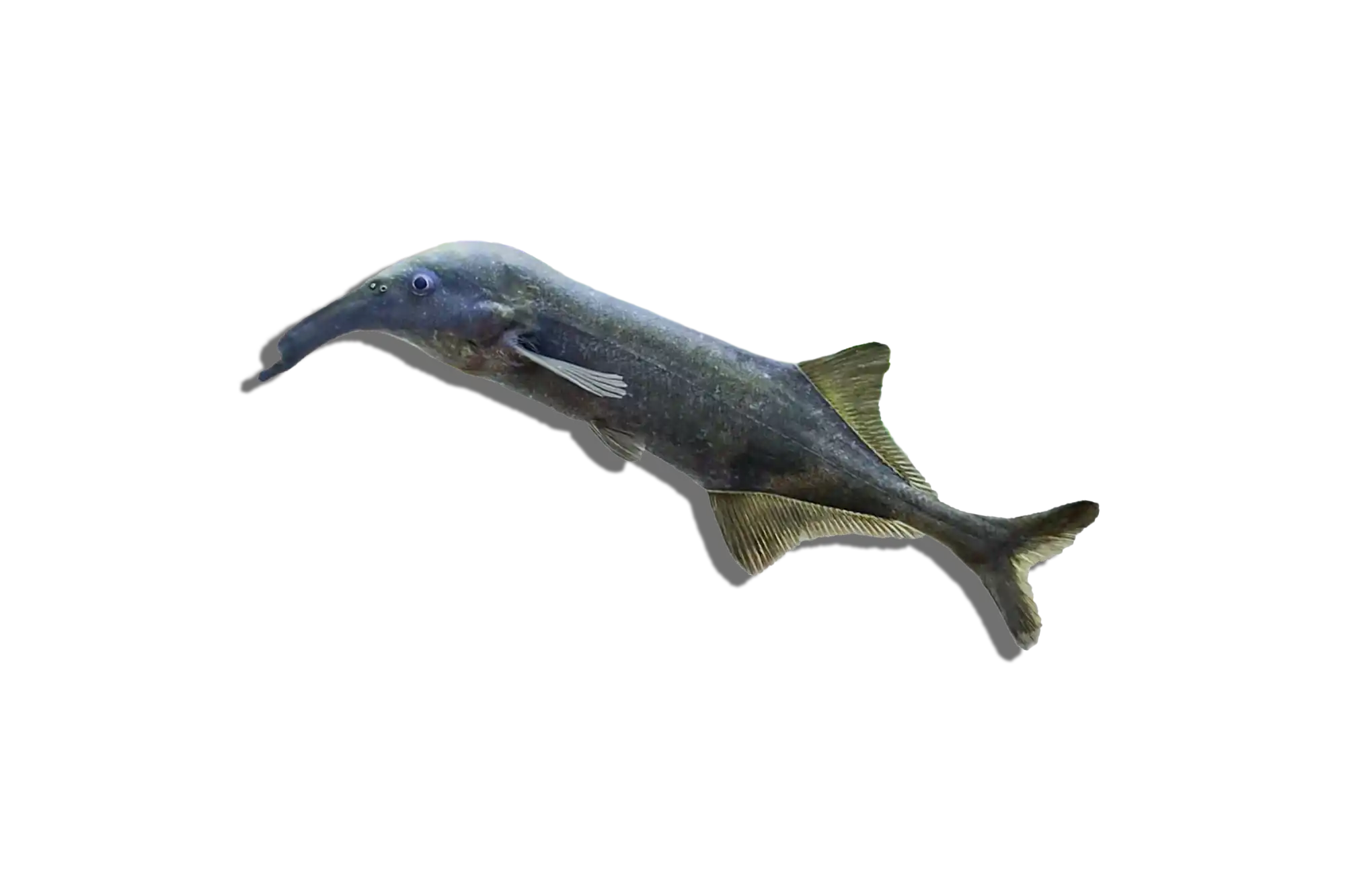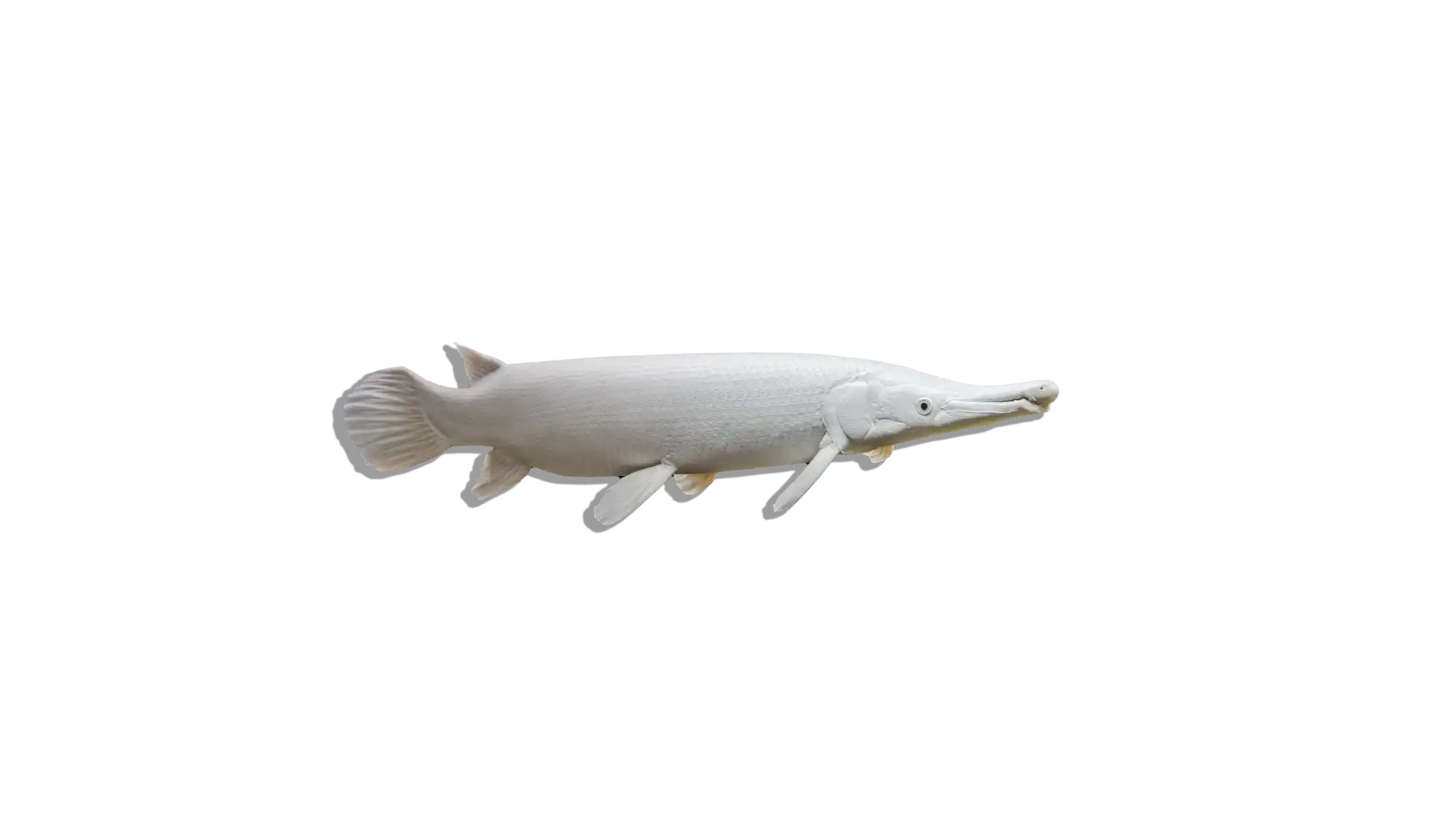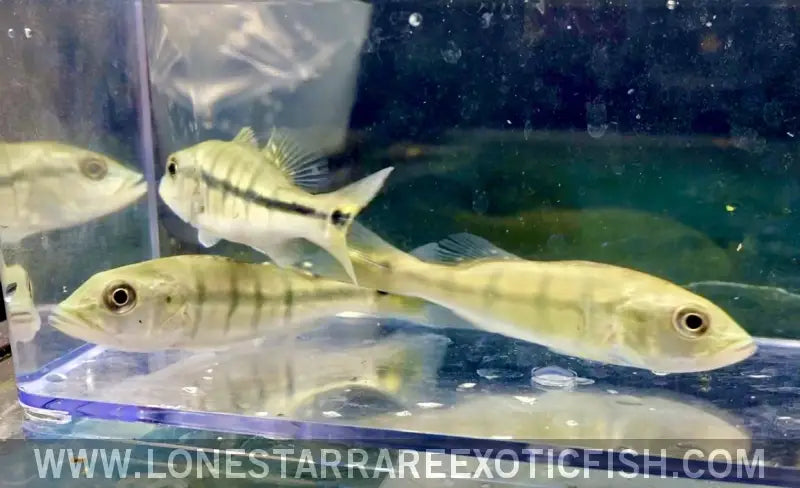Description
Common Name: Intermedia Peacock Bass
Scientific Name: Cichla intermedia
Other Names: None widely recognized
The Intermedia Peacock Bass is a striking and powerful freshwater fish known for its vibrant coloration and aggressive predatory behavior. It features a streamlined body with a silver-gray base color, adorned with iridescent blue and green scales that shimmer under light. Distinctive black vertical bars run along its sides, which can fade or intensify based on the fish's mood or environment. The fins are often tinged with reddish-orange, adding to its visual appeal. This species is highly prized by aquarists for its beauty and dynamic presence in large aquariums.
Habitat and Distribution:
The Intermedia Peacock Bass is native to the Amazon River basin in South America, specifically found in countries such as Brazil, Colombia, and Venezuela. They are commonly found in slow-moving river systems, including the Rio Negro and Orinoco River tributaries. These fish thrive in environments with abundant vegetation, submerged branches, and roots, which provide ample hiding spots and ambush opportunities for hunting prey. The natural habitat consists of warm, slightly acidic to neutral waters with a steady flow.
Size and Lifespan:
In the wild, Intermedia Peacock Bass can reach lengths of up to 24 inches (60 cm) or more. In captivity, they typically grow slightly smaller, usually around 18-20 inches (45-50 cm). Their lifespan ranges from 10 to 15 years when provided with optimal care, including a proper diet, clean water, and sufficient space.
Diet and Behavior:
Intermedia Peacock Bass are carnivorous predators, primarily feeding on smaller fish, crustaceans, and occasionally insects in their natural habitat. In a home aquarium, they should be offered a diet of meaty foods such as live or frozen fish, shrimp, and protein-rich pellets. It is important to avoid feeding them saltwater foods like shrimp, krill, or seafood. They are known for their aggressive hunting behavior and territorial nature, making them fascinating yet challenging to keep. These fish are active and require ample swimming space, often displaying dynamic and interactive behaviors.
Breeding and Reproduction:
Breeding Intermedia Peacock Bass in captivity is difficult due to their size and specific environmental needs. They are substrate spawners, with females laying adhesive eggs on submerged surfaces like rocks or wood. Successful breeding often requires a large tank with optimal water conditions and ample hiding places. The pairs exhibit courtship behaviors and aggressively guard their eggs and fry. Captive breeding is rare and typically undertaken by experienced aquarists or specialized breeding operations.
Aquarium Care and Tank Requirements:
Due to their size and aggressive nature, Intermedia Peacock Bass require a large aquarium, with a minimum of 150 gallons recommended for adult specimens. The tank should be equipped with efficient filtration, strong water flow, and regular water changes to maintain water quality. Providing a naturalistic environment with plenty of hiding spots, such as rocks, driftwood, and sturdy plants, will help reduce stress and encourage natural behavior. Water temperature should be maintained between 75-82°F (24-28°C), with a pH of 6.0-7.5 and moderate hardness.
Ideal Tank Mates:
Given their predatory instincts, Intermedia Peacock Bass are best kept with similarly sized, robust fish that can hold their own. Suitable tank mates include other large cichlids, large catfish, and similarly aggressive species. Avoid housing them with smaller, more passive fish that may become targets of aggression or predation.
Difficulty Level:
Intermediate to Advanced. Keeping Intermedia Peacock Bass requires a good understanding of large predatory fish care, water quality management, and providing appropriate tank conditions. They are best suited for experienced aquarists with large, well-maintained tanks.
Water Parameters:
- Temperature: 75-82°F (24-28°C)
- pH: 6.0-7.5
- General Hardness (GH): Moderate to hard water (5-20 dGH)
- Carbonate Hardness (KH): 6-15 dKH
- Ammonia: 0 ppm (ideal), up to 0.25 ppm (max)
- Nitrite: 0 ppm (ideal), up to 0.25 ppm (max)
- Nitrate: <20 ppm (ideal), up to 40 ppm (max)
Additional Information:
- The Intermedia Peacock Bass's vibrant coloration and predatory behaviors make it a highly sought-after species among advanced hobbyists.
- In their natural habitat, they play a crucial role in controlling populations of smaller fish species, contributing to the ecological balance of their environment.
- Fun fact: Peacock bass are known for their powerful strikes and can be challenging yet rewarding to catch for sport fishermen.
- Conservation status: Not evaluated, but populations are impacted by habitat loss and overfishing in some areas of their range.

